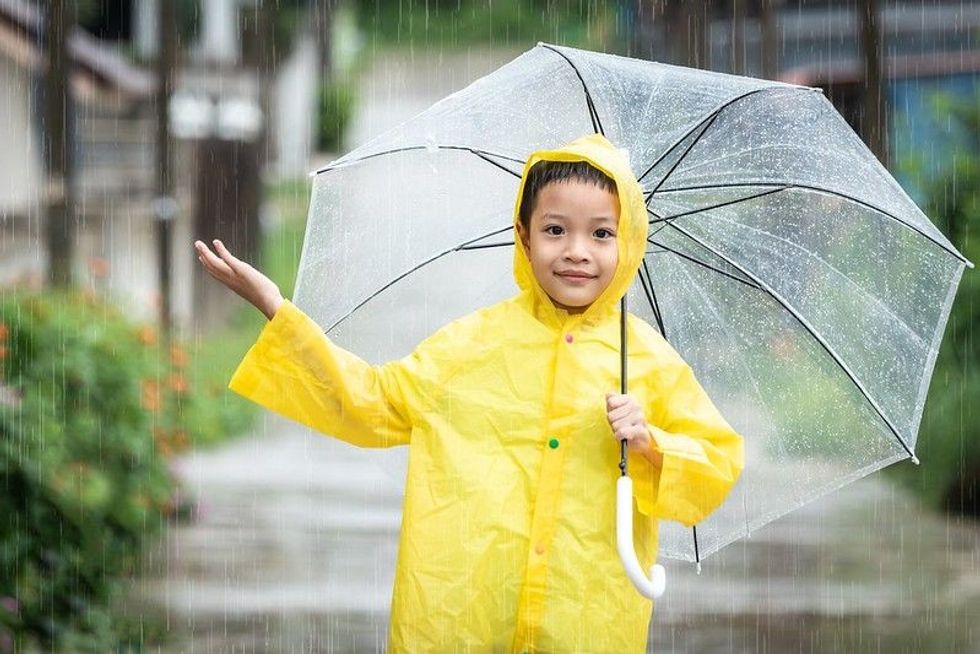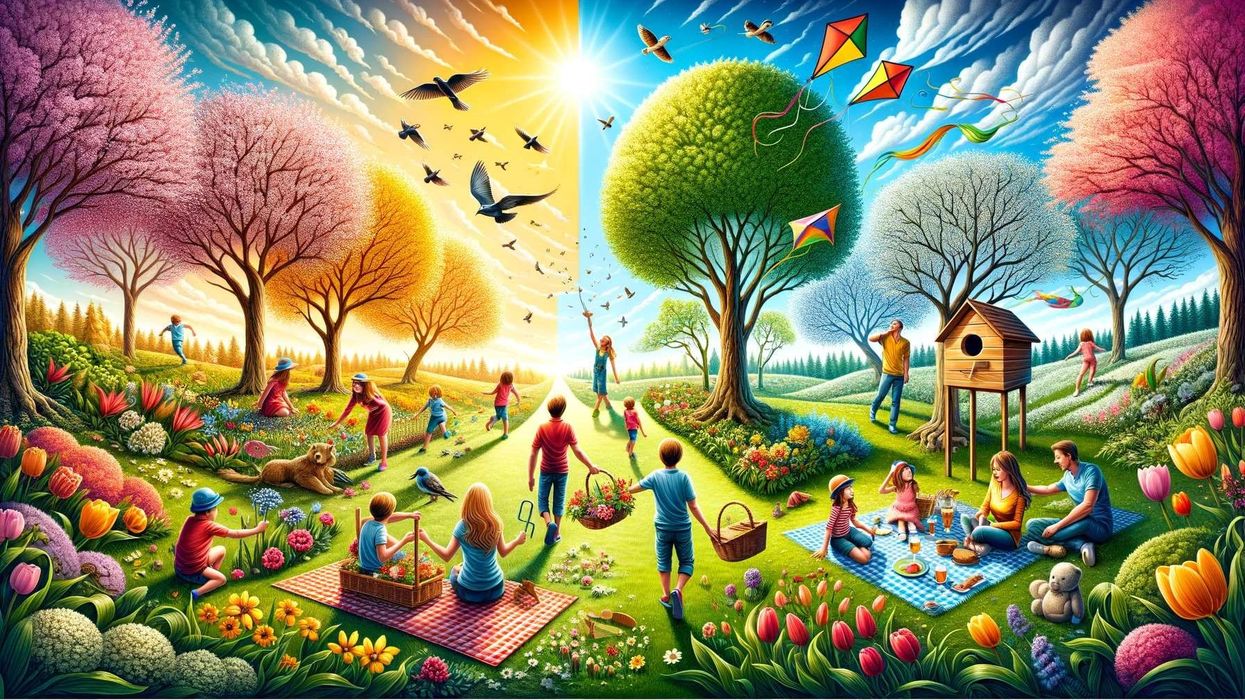As the seasons change, getting the kids involved in weather activities is an engaging way to educate and have some fun along the way.
These ideas include suggestions for covering preschool weather activities, all the way up to more complex projects for teens, where they can get to grips with advanced projects. All these resources focus mainly on utilising items you can already find in the house, so you can recycle items into new projects!
Preschool (Ages 5 And Under)
These preschool weather activities focus on learning and sensory play, using simple craft materials and recycled objects from around the house. Kids are sure to learn something new, and have lots of fun in the process!
Weather Sensory Bottles: These colourful sensory bottle ideas are great for helping to teach young children about different types of weather, and can be easily incorporated into play sessions.
Making Waves: This bathtime activity that most kids are encouraged not to do can actually be a great learning opportunity! When they're in the bath encourage your child to swish the water back and forth- this is an easy way to explain the science of waves, while getting clean in the process!
Gravity Cloud Painting: Fun weather paintings make a lovely keepsake or gift, and are a great opportunity to talk with your child about how gravity works.
Symmetrical Cloud Shapes: A well-used craft idea, all you need for this symmetrical cloud painting is some blue paper and white paint. Get your child to paint half a 'cloud' on one side of the paper, then fold in half to create your very own symmetrical cloud painting!
Weather Chart/Journal: This idea can be easily readjusted to different age groups, but is a fun and simple way to encourage young children to learn the symbols for different types of weather. Create a simple weather chart showing the days of the week, and let the kids 'record' the weather each day using simple weather symbols.
Easy Cardboard Rainstick: Using a recycled cardboard tube, an easy to make rainstick instrument sounds just like rainfall!
2-Ingredient Fake Snow: You can do a simple science experiment using shaving cream and baking soda to make easy, white, powdery, fake snow.
Key Stage 1 (Ages 5-7)

These fun weather crafts and activities are filled with colour and excitement, and will keep the kids entertained for hours!
Ice Expansion: A simple way to show how ice expands is to fill up a plastic bottle to the brim with water. Put into the freezer until fully frozen, and write down the changes to the bottle as the ice has expanded (spoiler: It will crack!).
Paint With Rain: This fun weather craft literally uses rain to make beautiful paintings! All you need is a rainy day and some powdered paint to make your very own rain paintings.
Puddle Science! Who doesn't love puddles? Once the kids are done splashing around on a rainy day, A puddle science activity looks at what happens to water when it evaporates naturally. This experiment is also a great starting point for kids when learning about the rain cycle.
Make A Rainbow: Ready to take your rainbow crafts one step further? An easy science experiment illustrates how rainbows are formed, using a CD. Younger kids will love seeing the rainbow, but this activity can also be used as an example to start teaching older children about the science of light and refraction.
Ice Excavation Activity: This easy activity allows kids to stage their very own ice excavation, chipping through to find secret treasure hidden beneath the ice.
Key Stage 2 (Ages 7-11)
With some more understanding of weather and how it works, these activities focus on the ways kids can measure the weather, and the different things our environment can teach us.
Top Tip: If you choose to make DIY measuring equipment, why not keep it and get the kids to document the weather every month or season, so they can get to grips with collecting and comparing the changes in weather? This activity can be expanded further by making simple graphs or diagrams!
Recycled Weather Vane: Using recycled materials, kids can make their very own weather vane to monitor how the direction of the wind changes.
Make Your Own Sundial: Ever wanted to tell the time without a clock? Kids can use their own imagination and ideas to decorate a sundial to make it their own.
Classifying Clouds: Learning to classify clouds is simple, and will arm the kids with impressive knowledge. You can find a fun cloud classification activity includes free printable ideas, and encourages kids to read weather books.
Build A Rain Gauge: Don't get down just because it's rainy- turn it into a learning experience with an easy homemade rain gauge!
Edible Rock Cycle: Sweets and science never went together so well. Teach the kids about the rock cycle and how rocks form with an edible science activity.
DIY Volcano Experiment: Make your own fizzy volcano explosion with this easy weather science experiment.
Make Your Own Ecosystem: All you need is a jar and some natural ingredients to show the kids how they can make their very own mini ecosystem in a jar!
DIY Barometer: Check the air pressure with a super simple barometer that the kids can make themselves.
Key Stage 3 (Ages 11-14)
It can be a challenge getting older kids and teens enthusiastic about weather science activities. These resources, however, have something for everyone, and provide fascinating projects that kids can throw themselves into for a day or two.
Investigate Tsunamis: Give teens an in-depth look into the science of tsunamis and the factors that control them.
Build An Earthquake Proof Structure: Challenge kids to build a structure out of straws, and see if it would withstand an earthquake.
Shaving Cream Clouds: Help kids get to grips with the rain cycle, and understand how rain forms.
Sunny Day Solar Oven: This fun idea shows how tasty weather science can be! It requires a hot day, but this technique shows you how you can create an oven from just recycled materials, and perhaps cook on it too (depending on the temperature in your area!).
Weather Journalling: If your child enjoys creative activities, this journalling idea shows fun ways to record the weather daily in bullet journal format.
Seismic Monitor: With online resources, you are able to see the different seismic waves produced by earthquakes around the world. Take this activity further by encouraging kids to identify the types of waves in a specific area, and collate the data in a graph or table.









